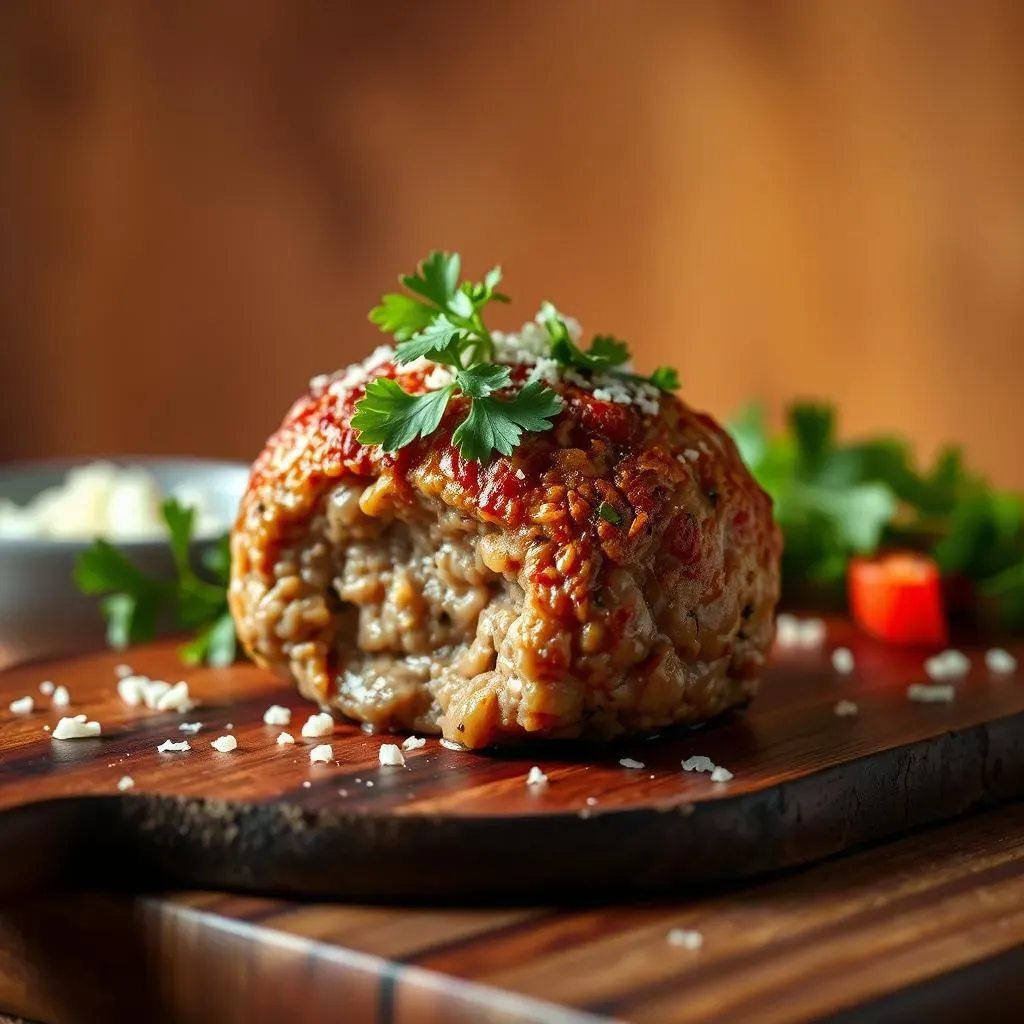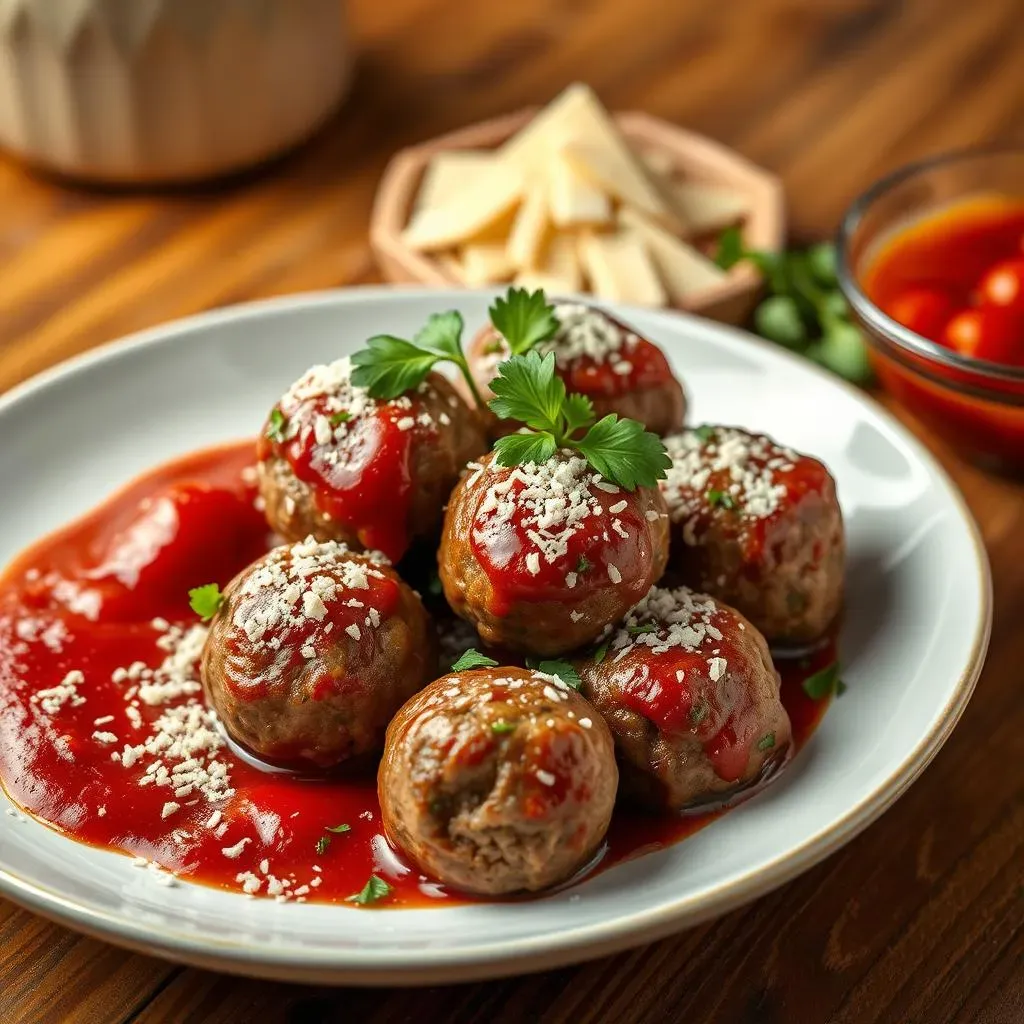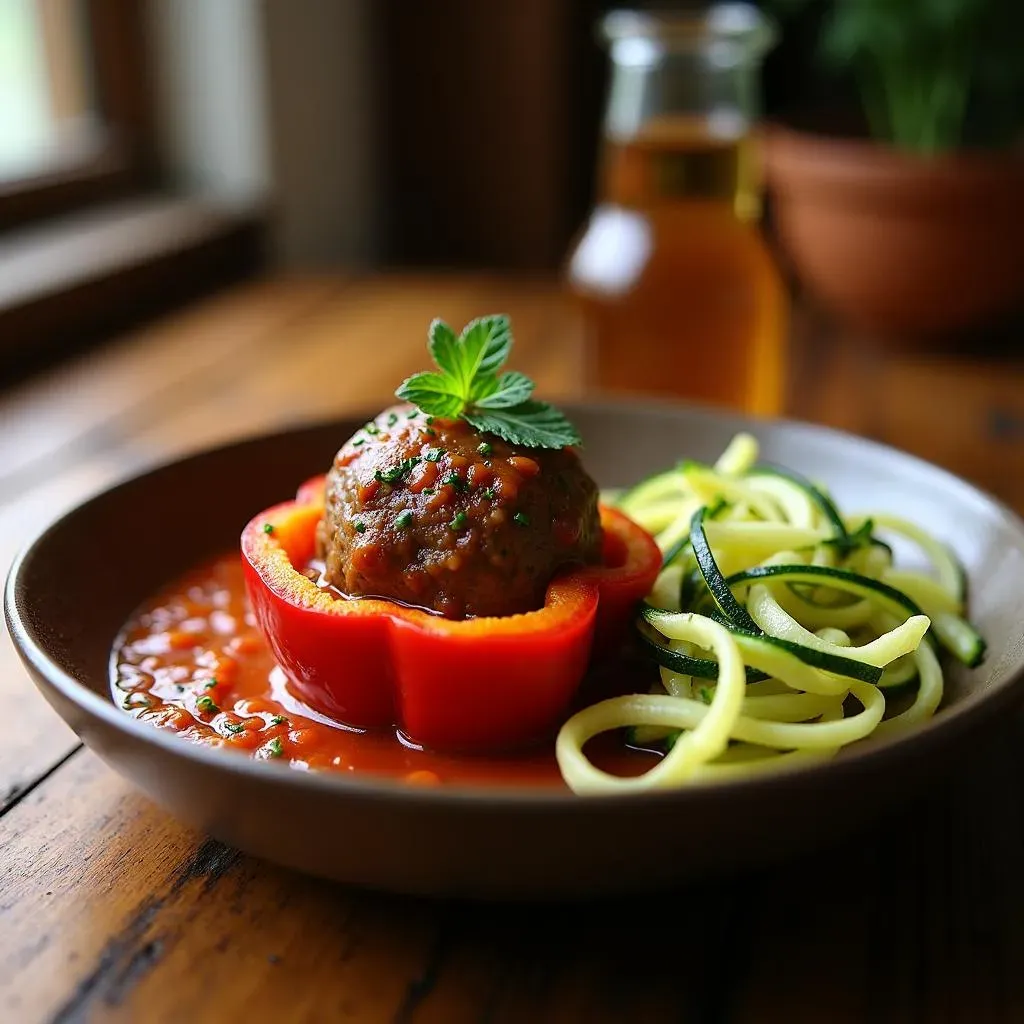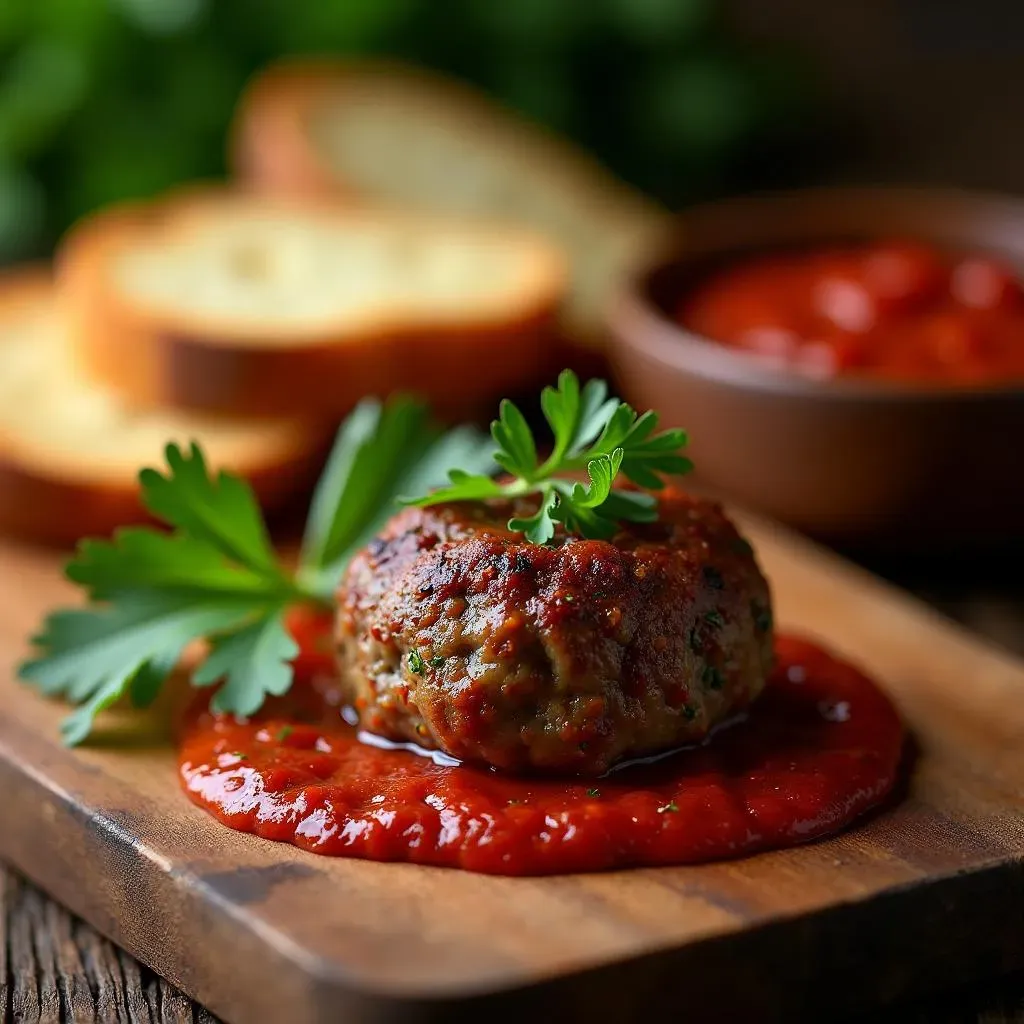Table of Contents
Tired of recipes that leave you scratching your head or worse, with a less-than-stellar result? Let's be honest, finding a truly *great* beef meatball recipe can feel like searching for a needle in a haystack. But what if I told you there's a way to create incredibly juicy, flavorful beef meatballs without relying on milk? This article is your guide to mastering the art of the perfect "beef meatball recipe no milk," unlocking a world of culinary possibilities. We'll walk you through a foolproof recipe, explore exciting variations to personalize your meatballs, and offer ingenious serving suggestions to impress your friends and family. Don't worry about those pesky recipe mishaps – we'll also equip you with troubleshooting tips to conquer any meatball-making challenges. Get ready to ditch the dairy and embrace the deliciousness! This isn't just another recipe; it's your passport to meatball mastery. So, grab your apron, and let's get cooking!
Mastering the Perfect Beef Meatball Recipe: No Milk Required

Mastering the Perfect Beef Meatball Recipe: No Milk Required
The Foundation: Ingredients for Success
Let's start with the star of the show: the beef! I always recommend using a blend of ground beef – about 80/20 works perfectly. That little extra fat keeps the meatballs wonderfully moist and tender. You can check out this best ground beef meatball recipe for more ideas. Think of it as the secret ingredient for unbelievably juicy meatballs. Next up are the aromatics: finely minced onion and garlic, the backbone of any good meatball. We'll also add some fresh herbs – parsley and oregano are classic choices – for that authentic Italian touch. Don't forget the breadcrumbs! They help bind the mixture, creating meatballs that hold their shape beautifully. And finally, a touch of salt and pepper to season everything perfectly.
One thing I love about this recipe is its adaptability. Feeling adventurous? Try adding some grated Parmesan cheese (if you aren't avoiding dairy entirely) or even some finely chopped mushrooms for an earthy twist. For a bolder flavor, incorporate a pinch of red pepper flakes. The beauty of cooking is experimentation! Remember, these are *your* meatballs; feel free to tweak things to your liking. Need more ideas? Try this beef meatball recipe variations page for inspiration.
Ingredient | Quantity | Notes |
|---|---|---|
Ground Beef (80/20) | 2 lbs | Use a high-quality blend for best results |
Onion, minced | 1 large | Finely mince for even distribution |
Garlic, minced | 2 cloves | Fresh garlic adds the best flavor |
The Technique: Mixing and Shaping for Perfection
Now, let's talk technique. Gently combine all your ingredients in a large bowl. The key here is "gently." Overmixing can lead to tough meatballs, so avoid overdoing it. Just mix until everything is evenly distributed. This is where your intuition comes into play! Imagine you're making a delicate snow angel; you wouldn't want to stomp on the snow, would you? The same principle applies here. Once the mixture is combined, form it into small balls, about 1.5 to 2 inches in diameter. Consistent sizing ensures even cooking. For a truly authentic feel, try using a small ice cream scoop; it's the secret weapon of many pro chefs!
Once you've shaped your meatballs, you have two main cooking options: baking or frying. Baking is generally healthier and easier to manage, resulting in consistently cooked meatballs every time. Frying, on the other hand, gives you that extra crispy exterior. For a baked recipe, preheat your oven to 375°F (190°C) and bake your meatballs for about 20-25 minutes, or until they're cooked through. If you prefer frying, heat some olive oil in a large skillet over medium heat and fry them until golden brown. Regardless of the method, always check for doneness using a meat thermometer. The internal temperature should reach 160°F (71°C).
- Gently combine ingredients
- Form into 1.5-2 inch balls
- Bake at 375°F (190°C) for 20-25 minutes, or fry until golden brown
- Use a meat thermometer to check for doneness (160°F/71°C)
Beyond the Basics: Creative Variations on Your MilkFree Beef Meatballs

Beyond the Basics: Creative Variations on Your MilkFree Beef Meatballs
Spice Things Up: Global Flavor Adventures
Let's get adventurous! Who says meatballs have to be just Italian? Think beyond the classic flavors. For a zesty kick, try adding a teaspoon of chipotle powder or a dash of your favorite hot sauce to the meatball mixture. For a taste of the Orient, stir in some finely chopped ginger and soy sauce. A pinch of curry powder can transport your meatballs to India. The possibilities are endless! Don't be afraid to experiment with different spices and herbs to create your signature meatball flavor profile. Check out this Asian beef meatball recipe for some inspiration.
One of my personal favorites is adding a tablespoon of Worcestershire sauce. It adds a complex umami depth that elevates the overall flavor profile. Another fun twist is incorporating finely chopped sun-dried tomatoes for a burst of Mediterranean sunshine. For a vegetarian alternative, consider using a mixture of lentils and vegetables. Remember, the goal is to have fun and create meatballs that reflect your unique taste preferences. Looking for something more traditional? Consider our traditional beef meatball recipe for a simple twist.
- Chipotle powder for smoky heat
- Ginger and soy sauce for Asian flair
- Curry powder for Indian inspiration
- Worcestershire sauce for umami depth
- Sun-dried tomatoes for Mediterranean brightness
Meatball Makeovers: Texture and Ingredient Tweaks
Let's talk texture. Want a coarser meatball? Use larger breadcrumbs or even coarsely chopped nuts (like walnuts or pecans) for a delightful crunch. For a smoother texture, pulse the breadcrumbs in a food processor before adding them to the mixture. You can also experiment with different types of breadcrumbs – panko breadcrumbs create a lighter, crispier texture, while regular breadcrumbs offer a more traditional feel. It's all about finding the perfect balance that suits your palate. Want something quick? Try this quick beef meatball recipe.
Don't be afraid to swap out ingredients. Instead of ground beef, try using ground turkey, chicken, or even a combination of meats for a unique flavor profile. Adding cheese (if you're not avoiding dairy) can also enhance the richness and flavor of your meatballs. Consider adding finely chopped vegetables like zucchini or bell peppers for a healthier twist. The possibilities are truly endless – let your culinary creativity run wild! Looking for something different entirely? Check out our beyond beef meatball recipe page for more ideas.
Ingredient Swap | Effect on Texture | Flavor Impact |
|---|---|---|
Panko Breadcrumbs | Lighter, crispier | Subtle, airy |
Regular Breadcrumbs | Denser, more traditional | Hearty, classic |
Chopped Nuts | Crunchy | Adds nutty flavor |
Serving Suggestions: Elevate Your MilkFree Beef Meatball Dishes

Serving Suggestions: Elevate Your MilkFree Beef Meatball Dishes
Beyond Spaghetti: Creative Serving Ideas
Let's face it, spaghetti and meatballs is a classic for a reason. But don't let that limit your culinary creativity! Think outside the pasta box. These milk-free beef meatballs are incredibly versatile. For a lighter option, serve them over a bed of zucchini noodles or a vibrant salad. The meatballs' robust flavor pairs beautifully with the freshness of greens and a light vinaigrette. For a heartier meal, try them in a hearty stew or soup. Think rich tomato-based broths, creamy mushroom soups, or even a spicy lentil stew. The possibilities are endless!
For a fun twist, try stuffing your meatballs into hollowed-out bell peppers, creating a colorful and flavorful dish. Or, consider using them as a topping for baked potatoes, adding a protein-packed punch to a classic comfort food. If you're feeling extra adventurous, why not try making meatball sliders? Serve them on mini brioche buns with your favorite toppings – a simple yet satisfying option for a casual get-together. Need a quick idea? Try this quick beef meatball recipe and serve it over rice.
- Zucchini noodles
- Salads
- Soups and stews
- Stuffed bell peppers
- Baked potato topping
- Meatball sliders
Sauce it Up: The Perfect Meatball Partner
The right sauce can truly make or break a meatball dish. While a classic marinara is always a winner, don't be afraid to experiment with different flavors. A creamy pesto sauce adds a vibrant, herbaceous touch, while a spicy arrabbiata sauce provides a fiery kick. For a sweeter option, try a balsamic glaze, which complements the richness of the meatballs beautifully. A simple tomato-based sauce with a hint of garlic and oregano can also elevate the dish to a whole new level.
Don't forget about the power of herbs! Fresh basil, parsley, and oregano are classic choices, but feel free to get creative. A sprinkle of thyme or rosemary can add a unique depth of flavor. For a truly gourmet experience, try making your own sauce from scratch, using fresh, high-quality ingredients. The flavor difference is incredible! Looking for something a bit different? Check out our beef meatball soup recipe for a unique twist.
Sauce Type | Flavor Profile | Suggested Herbs |
|---|---|---|
Marinara | Classic tomato-based | Basil, oregano |
Pesto | Herbaceous, nutty | Basil, pine nuts |
Arrabbiata | Spicy tomato-based | Red pepper flakes |
Troubleshooting Tips for the Best Beef Meatball Recipe (No Milk!)

Troubleshooting Tips for the Best Beef Meatball Recipe (No Milk!)
Meatballs Too Dry?
Ah, the dreaded dry meatball! This usually happens when you've used lean ground beef or haven't added enough moisture to the mixture. Remember that little bit of extra fat in the 80/20 blend is your friend! It's the key to juicy, tender meatballs. If you've already made your meatballs and they're a bit dry, don't despair! You can still salvage them. Try adding a little bit of beef broth or even tomato sauce to the pan while you're cooking them to add moisture. This will help steam them slightly and make them more tender.
Another common culprit is overmixing. Gentle is the name of the game here. Overmixing develops the gluten in the meat, making the meatballs tough and dry. Next time, try mixing the ingredients just until they are combined. Don't worry about a perfectly smooth mixture; a little bit of texture is okay. For extra moisture, consider adding a beaten egg to the mixture. It acts as a binder, helping to hold everything together and adding a touch of richness. Need a quick fix? Check out our quick beef meatball recipe for tips on moisture.
- Use a higher fat content ground beef (80/20)
- Add a splash of broth or tomato sauce while cooking
- Mix gently to avoid overworking the meat
- Consider adding a beaten egg
Meatballs Falling Apart?
Meatballs crumbling before they even hit the pan? This usually means your mixture isn't binding properly. The breadcrumbs are your best friend here. Make sure you're using enough, and that they're well distributed throughout the mixture. If you're using fresh breadcrumbs, they might be a bit too moist, leading to a less-than-ideal bind. Try toasting them lightly in a pan before adding them to the meat mixture. This will help to remove excess moisture and improve their binding capabilities. Don't forget the egg! It's a natural binder that helps hold everything together.
Another solution is to gently chill the meatball mixture for about 30 minutes before shaping. This allows the flavors to meld and the mixture to firm up, making it easier to handle and less prone to falling apart. If you're still having trouble, you might need to add a bit more breadcrumbs to the mixture to increase the binding power. And remember, don't overwork the mixture when shaping the meatballs. Gentle handling is key to preventing them from falling apart. Looking for a fail-safe recipe? Try our best beef meatballs recipe – it's designed to be foolproof.
Problem | Possible Cause | Solution |
|---|---|---|
Meatballs falling apart | Insufficient binding | Add more breadcrumbs, chill the mixture, use an egg |
Meatballs too dry | Lean meat, overmixing | Use higher fat content meat, add moisture during cooking |